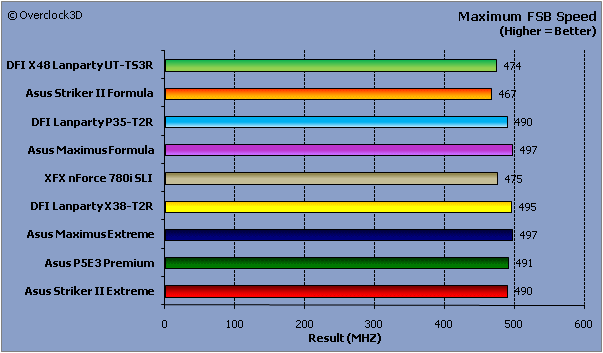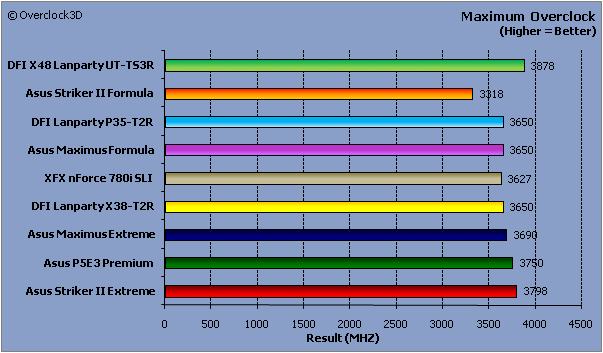DFI X48 UT-T3RS Motherboard
Test Setup
Â
To ensure that all reviews on Overclock3D are fair, consistent and unbiased, a standard set of hardware and software is used whenever possible during the comparative testing of two or more products. The configuration used in this review can be seen below:
Â
Â
During the testing of the setup above, special care was taken to ensure that the BIOS settings used matched whenever possible. A fresh install of Windows Vista was also used before the benchmarking began, with a full defrag of the hard drive once all the drivers and software were installed, preventing any possible performance issues due to leftover drivers from the previous motherboard installations.
To guarantee a broad range of results, the following benchmark utilities were used:
 Â
Synthetic CPU & Memory Subsystem
• Sisoft Sandra XII 2008c
• Lavalys Everest 4.0
• Sisoft Sandra XII 2008c
• Lavalys Everest 4.0
File Compression & Encoding
• 7-Zip File Compression
• River Past ViMark
Disk I/O Performance
• HDTach 3.0.4.0
• Sisoft Sandra XII 2008c
3D / Rendering Benchmarks
• Cinebench 10
• 3DMark 05
• 3DMark 06
3D Games
• Bioshock
• F.E.A.R
• Quake 4
Â
Â
Overclocking
Â
I was expecting great things from the DFI X48 UT-T3RS and I wasn’t disappointed. Despite a few problematic settings I managed a decent FSB of 474. The time it took to get this FSB however was a little disappointing as I had numerous issues and non-boot scenarios. Some of the non-boot scenarios were down to overzealous memory overclocking resulting in a ‘C1’ error on the on-board diagnostic LED. Occasionally the only way to clear this error was to manually reset the BIOS by the use of the on-board jumpers as the EZ-Clear was simply not up to the job.Â
Â
I found the board to be akin to taking a posh girl out on a first date. Treat her well, go slowly and the rewards are yours for the taking, however if you go straight for the money shot you will get slapped and have to start all over again. The DFI needs time and patience if you are going to get the best out of it. It’s simply no good upping the FSB and a few voltages and hoping for a good overclock. Frustrating, certainly, but with a little research into the numerous settings you can push things a little harder with the DFI than you can with other boards but be under no illusion this is no ‘point and squirt’ board – if you are after a quick and easy overclock then I suggest you look elsewhere.
 Â
Â
Â
Â
For the maximum overclock we use a maximum voltage of 1.5v and see how far the board can go. Here is where the DFI UT-T3RS shows its strength in the overclocking department. While the maximum FSB may appear to be a little disappointing, the maximum overclock surpasses all its competitors with ease. I should however note that with our sample the Vdroop when under load (even with the setting preventing this set to enabled) was approximately 0.02v. Clearing its nearest rival by 80MHz is no mean feat and puts the DFI board at the top of the overclocking pile. I have no doubts that both the FSB and maximum overclock could be bettered given more time and more research/testing but I was happy the board has proven its salt by becoming our new overclocking supremo. Well done DFI.





